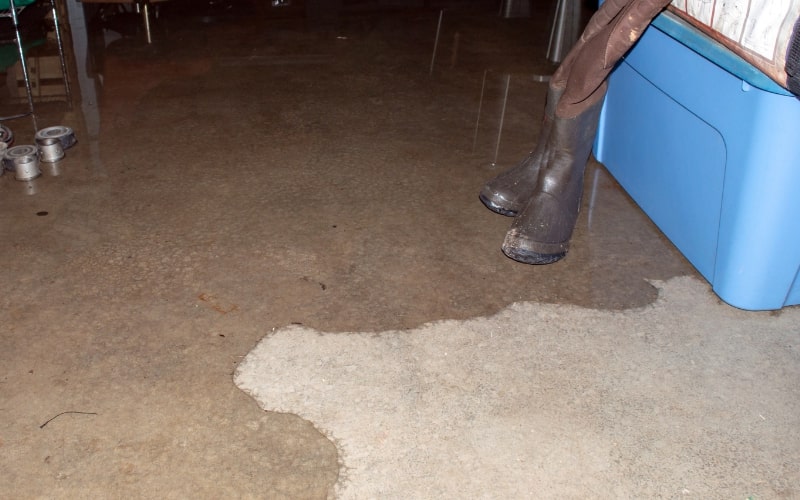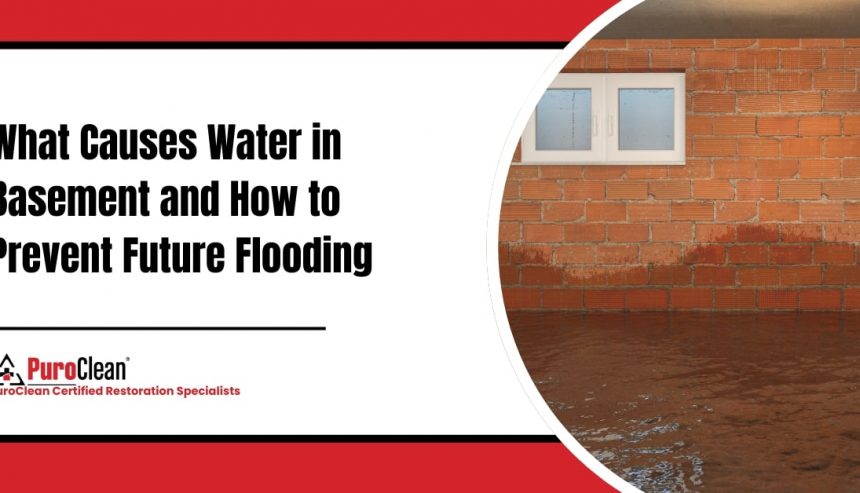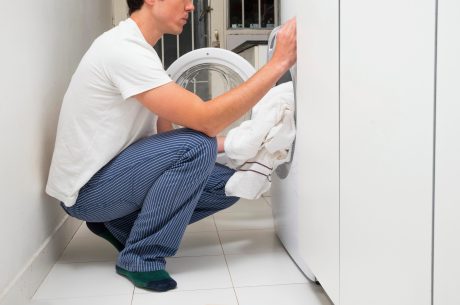Water in basement is a common problem that can lead to significant damage if not addressed quickly. From mold growth to structural issues, the presence of water can cause expensive repairs and long-term harm to your home. The most common causes comprise poor drainage, foundation cracks, and heavy rainfall. Understanding these causes is key to preventing future flooding.
In this guide, we’ll explore how you can keep water out of your basement with simple, effective steps like improving drainage, sealing cracks, and installing a sump pump. If your basement has already experienced water damage, hiring a water damage restoration expert can help you fix the problem and protect your home from further harm.
What Are the Common Causes of Water in Basement?
A wet basement can cause substantial damage to your home, leading to mold, structural issues, and increased repair costs. Understanding the causes can help you specify the problem early and take steps to prevent it. Here are the common causes of water in basement:
- Poor Drainage Systems: Blocked or improperly installed gutters and downspouts can direct water toward the foundation, causing leakage into the basement.
- Foundation Cracks: Cracks in the foundation walls or floor can let in water, especially during heavy rainfall.
- Improper Slope Around the Home: If the ground slopes toward the foundation, water will naturally flow into the basement.
- Clogged or Damaged Sump Pump: A malfunctioning or clogged sump pump can’t effectively remove water from the basement, leading to flooding.
- High Water Table: When the groundwater level rises, it can seep into the basement, particularly during rainy periods.
- Faulty Window Wells: Window wells that aren’t properly sealed or drained can fill with water, allowing it to enter through basement windows.
- Heavy Rainfall: Intense or prolonged rainfall can overwhelm the drainage system, causing water to pool around the foundation and seep into the basement.
- Clogged Gutters: When gutters become clogged with debris, they can no longer channel rainwater properly, leading to water spilling over the edges and flowing down the walls into the basement.
How to Prevent Future Flooding in Your Basement
Basement flooding is a common issue, but there are several steps you can take to prevent future damage. Proper planning and maintenance can safeguard your home from water infiltration. Below are six methods for preventing basement flooding:
- Improve Your Home’s Drainage System
Ensure that your gutters and downspouts are clear of debris and are directing water at least 3–4 feet away from your home. It’s important to have properly functioning downspouts to prevent water from pooling near the foundation. Regularly assess and maintain your drainage system to avoid clogging, which could lead to overflow and water intrusion into the basement. Additionally, make sure the soil around your home slopes away from the foundation to avoid directing water toward it.
- Install a Sump Pump
A reliable sump pump is an essential tool for safeguarding your basement from flooding. Ensure the pump is positioned at the lowest point of your basement and can handle large volumes of water during heavy rainfall. Regularly test and service the pump to keep it in optimal condition. Additionally, consider installing a backup pump that operates on battery power in case of a power failure during storms. Consistent maintenance of your sump pump is crucial for preventing basement flooding and minimizing the risk of water damage.
- Seal Foundation Cracks
Foundation cracks can be a primary pathway for water to enter your basement. It’s essential to seal any cracks, regardless of size, using waterproof sealants or professional repairs. Foundation cracks allow water to infiltrate the basement and may lead to significant damage over time. Cracks may develop due to shifting soil or settling, but they can be repaired with epoxy or polyurethane-based sealants. If you’re unsure how to address the issue, consult a foundation repair expert to evaluate and fix the cracks effectively.
- Install Window Well Covers
Window wells can fill with water if not properly maintained, allowing water to seep into basement windows. To prevent this, install window well covers to protect your basement windows from water damage. Ensure the covers are clear of debris and securely fastened. You can also opt for window wells with proper drainage systems that enable water to flow away from the foundation. By protecting your basement windows with durable, weather-resistant covers, you can prevent water from entering your basement and causing potential damage.
- Landscaping Adjustments
The landscaping around your home plays a crucial part in preventing basement flooding. Avoid having flower beds, shrubs, or trees planted too close to your foundation, as they can trap water near the basement walls. You can also use soil or gravel to improve the slope of your yard, ensuring that water flows away from your foundation. Ensure your lawn is graded properly, especially around areas with basement windows, to avoid water pooling in unwanted areas. Effective landscaping adjustments can help keep your basement dry and protected from water damage.
- Waterproof Your Basement
Consider applying a waterproof coating to your basement walls and floors to prevent water from entering. This can be especially useful if you live in an area prone to heavy rainfall or high humidity. Waterproofing paints and sealants create a barrier that repels moisture and keeps water from infiltrating your basement. Additionally, think about installing a vapor barrier on the walls or floors to lessen the risk of moisture buildup. Waterproofing your basement supplies an extra layer of protection against flooding and helps maintain a dry, healthy environment.
Frequently Asked Questions

Image by Diane079F from Getty Images on Canva
Can mold grow if there is water in basement?
Yes, mold can grow quickly if there is water in basement. Moisture creates the perfect environment for mold to thrive, particularly in areas with poor ventilation. If water enters your basement, it’s essential to dry the area and address the source of the water to prevent mold growth, which can cause health complications and damage to your property.
How do I know if my foundation is at risk for cracking?
Signs that your foundation may be at risk for cracking include visible cracks in the walls or floor, doors and windows that stick, or uneven floors. These issues often result from shifting soil or settling. If you notice these symptoms, it’s best to consult a foundation repair expert who can assess the condition of your foundation and recommend proper repairs before the situation worsens.
How can I identify if my basement has water damage?
Signs of water damage in the basement comprise damp walls, peeling paint, musty odors, and mold growth. Look for puddles on the floor or discoloration on walls and ceilings. If you notice these symptoms, it’s important to act quickly to avoid further damage. Early detection and repair can prevent mold, rotting, and long-term damage to your home’s structure.
How long does it take to repair water damage in the basement?
The time it takes to repair water damage in a basement depends on the severity of the damage. Minor repairs like patching cracks and drying out the space may take a few days. However, significant damage involving mold removal, foundation repairs, or full waterproofing can take weeks. It’s essential to address water damage promptly to avoid further complications and delays.
Conclusion
Water in basement can cause serious damage to your home, but with proper prevention techniques like improving drainage, sealing cracks, and installing a sump pump, you can safeguard your property. Addressing the issue promptly will help protect your foundation and reduce the risk of long-term damage.
If you’re dealing with basement flooding, contact us at PuroClean Zephyrhills today for expert water damage restoration services. Our team is ready to help you restore your home and prevent further issues. Don’t wait—let us handle the problem efficiently and professionally.




 PuroClean Certified Restoration Specialists
PuroClean Certified Restoration Specialists